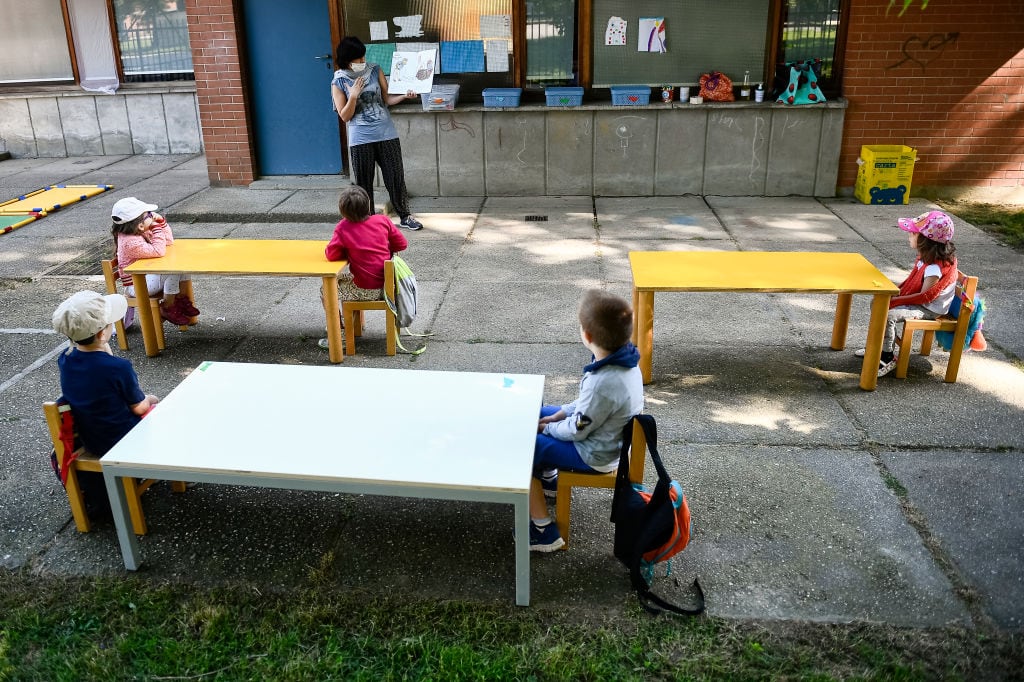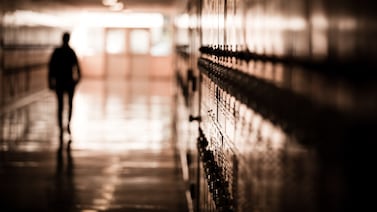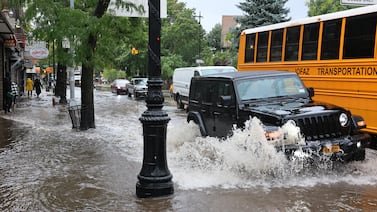While other states are drastically cutting budgets for 2020-21 in anticipation of plunging revenues, Illinois’ newly passed budget will keep school funding flat.
Still, that worries school leaders who say that they face higher expenses for smaller classes, additional buses, deep cleanings, and stiffer health and safety measures.
Districts are pricing out the costs of education in the era of COVID-19, and they say it will cost more no matter the scenario in the fall. But after spending a first round of federal stimulus dollars — mostly on tech devices and broadband access in districts with concentrations of low-income students — Illinois schools will have to confront additional costs using the same amount of money as last year.
The $40 billion Illinois budget, which passed both houses of the legislature and is awaiting the governor’s signature, draws on promised short-term loans of up to $5 billion from the Federal Reserve that legislators say they hope to repay with additional federal stimulus monies.
If additional stimulus funds don’t come through, legislators may have to revisit the budget.
Democratic legislators, who hope for more federal aid, said they prioritized holding funding steady for schools. School districts will get the same amount as they did this school year — $7.2 billion — distributed per a formula passed in 2017. In all, Illinois will spend just under $9 billion in state funds on education.
“There is a lot of learning loss and challenges for kids happening right now,” said State Sen. Heather Steans, who represents the Far North Side of Chicago. “Further hampering student experiences is not something we wanted to do unless absolutely necessary.”
Republicans, who voted against the measure in the Senate and the House, said they doubted what they called the plan’s shaky assumption.
“The budget relies heavily on massive borrowing and hope that the federal government will bail the state out with another stimulus package, which is no guarantee,” said a statement from Sue Rezin, a state senator from Morris, who voted against the measure.
As states face an economic downturn and declining revenues, they are making painful cuts to core services, including schools. Pritzker has pegged Illinois’ potential shortfall across the next 13 months at around $7 billion.
Whether some of the state’s coronavirus stimulus monies for schools will be used to make the math work isn’t clear. Illinois school districts are set to receive $512 million to use for coronavirus-related spending through the federal CARES Act, but several report spending their dollars immediately to ramp up remote learning. The state school board and the governor are each expected to receive discretionary monies, totaling $162 million more, to spend on students. The state has detailed how it plans to use those dollars, while the governor’s office has so far been mum.
“There are a lot of unknowns,” said Ralph Martire, executive director of the Center for Tax and Budget Accountability. Holding budgets flat this year means the state will probably take longer to make up for its chronic underfunding of schools, he said.
District leaders discussed the costs of reopening schools in a virtual town hall last week convened by the group Illinois for Educational Equity. Sharon Desmoulin-Kherat, the superintendent of Peoria Public Schools, said her district was using its $6.3 million in CARES Act funding to build a digital infrastructure including devices for students and teachers and Wi-Fi access.
That doesn’t include personal protective equipment, thermometers or other items she’d require for students to return to school buildings or more frequent deep cleanings.
“It’s going to cost a lot more money,” she said.
The Monmouth-Roseville District in western Illinois projects spending up to $425,000 more than in the current year, depending on requirements for class sizes and social distancing. Superintendent Edward Fletcher is scaling back summer school and math and reading coaches.
“I do not like slowing down the progress we’ve made,” he said at the funding panel. “It’s hard to put on brakes but unfortunately that’s what we’re going to have to do.”
School leaders also worry that property tax payments — a critical source of funding for schools — will come later in many jurisdictions.
“That is where the vast majority of our funding comes from,” said Nick Polyak, superintendent of Leyden High School District located in a northwest suburb near O’Hare Airport.
How schools reopen will affect spending. If fewer children can ride a bus or sit in classrooms, to abide by social distancing guidelines, schools will have to spend more to increase buses or staff, said Michael Jacoby, the executive director of the Illinois Association of School Business Officials.
The budget pressure will continue. “A second budget year flat would be very, very devastating,” he said. Jacoby said his organization is recommending that districts run several multiyear budget scenarios based on different assumptions, from budget further cuts down the road to deferrals in property tax receipts.
“Never tell your board you’re sure what you are going to see over the next three years,” Jacoby said.
That uncertainty has education advocates worried, even while they expressed relief that state schools wouldn’t face immediate budget cuts. Illinois previously committed to increase school funding by at least $350 million per year. That won’t happen this year.
The state’s persistent lack of financial reserves, its pattern of letting pension debt pile up and borrowing to meet short-term needs, and the prospect of higher interest rates for Illinois compound education advocates’ fears.
“There are still districts that are underfunded below 60% of what they need,” said Jessica Handy, the director of government affairs for Stand for Children Illinois. “As this pandemic hits, and children need more and more supports, these districts are still severely underfunded, and they will be asked to do more with what’s clearly an inadequate amount of funding.”
“It’s not what anybody hoped for,” said Robin Steans, the president of Advance Illinois. She acknowledged that the budget could have been worse. “Given how battered the budget is, getting level funding for education is a good first step.”
Samantha Smylie contributed reporting.







